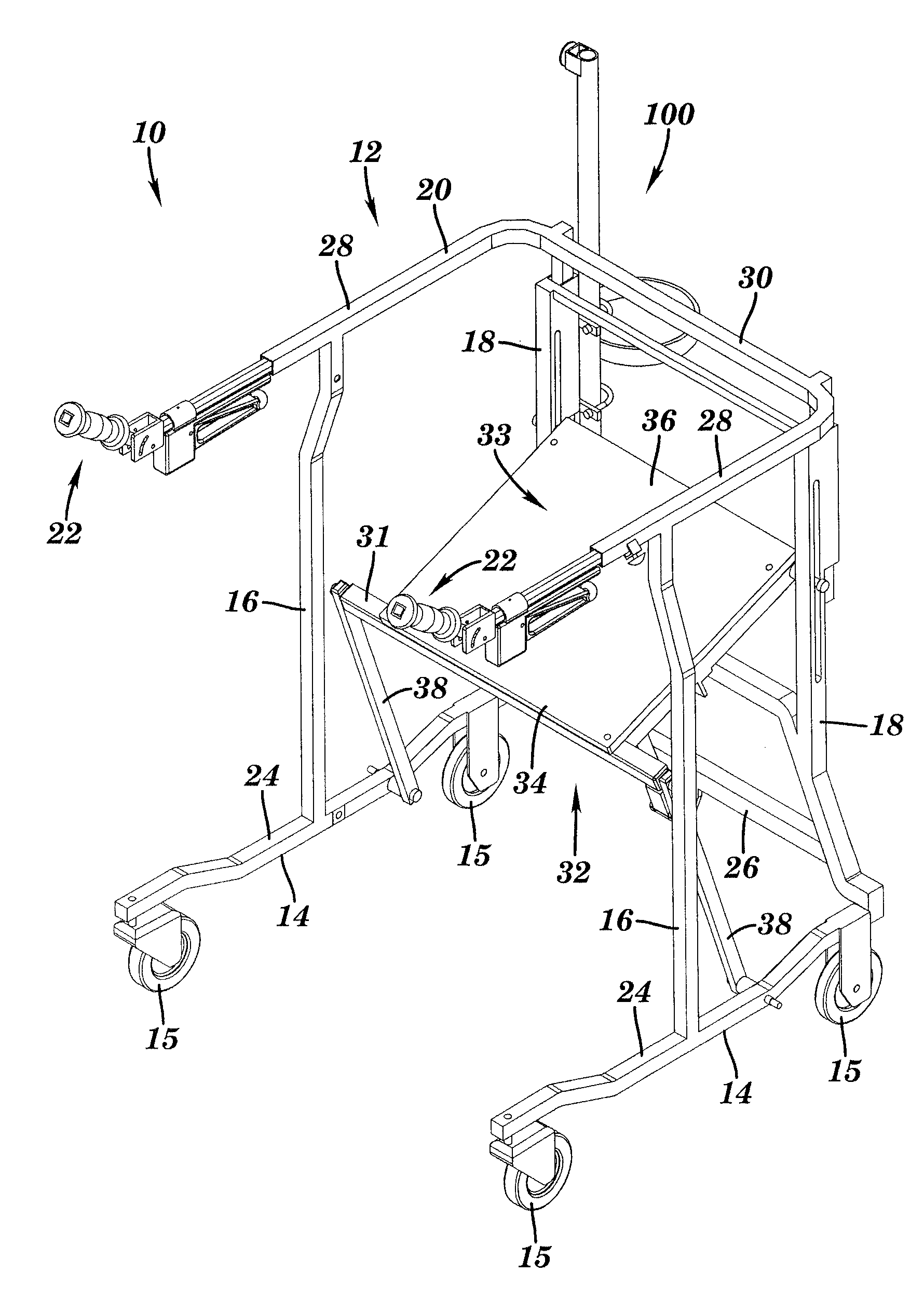Walker with lift-assisting seat assembly
a seat and walker technology, applied in the field of ambulatory assist devices, can solve the problems of major health problems in the elderly population, reduced mobility, and the difficulty of relatively common activities such as walking and standing for many, and achieve the effect of reducing the difficulty of walking and standing for many, and reducing the difficulty of walking and standing
- Summary
- Abstract
- Description
- Claims
- Application Information
AI Technical Summary
Benefits of technology
Problems solved by technology
Method used
Image
Examples
Embodiment Construction
[0027]The present invention provides an ambulatory assist device, that is, a “walker,” having a lift-assisting seat assembly that assists the user in rising from a seated to a standing position. The seat assembly may be retracted to avoid interfering with the user when the user rises to walk. FIG. 1 is a perspective view of a posterior walker 10 according to one aspect of the present invention. FIG. 2 is a rear perspective view of walker 10 shown in FIG. 1. FIG. 3 is a front elevation view of walker 10 shown in FIG. 1; FIG. 4 is a side elevations view of walker 10 shown in FIG. 1; and FIG. 5 is a rear elevation view of walker 10 shown in FIG. 1. As shown, walker 10 includes a frame assembly 12 which includes a lower frame assembly 14 having a plurality of wheels 15, a plurality of uprights 16 and 18 mounted to the lower assembly 14, and an upper frame assembly 20 mounted to the plurality of uprights 16 and 18. The plurality of uprights 16 and 18 comprise a plurality of front upright...
PUM
 Login to View More
Login to View More Abstract
Description
Claims
Application Information
 Login to View More
Login to View More - R&D
- Intellectual Property
- Life Sciences
- Materials
- Tech Scout
- Unparalleled Data Quality
- Higher Quality Content
- 60% Fewer Hallucinations
Browse by: Latest US Patents, China's latest patents, Technical Efficacy Thesaurus, Application Domain, Technology Topic, Popular Technical Reports.
© 2025 PatSnap. All rights reserved.Legal|Privacy policy|Modern Slavery Act Transparency Statement|Sitemap|About US| Contact US: help@patsnap.com



